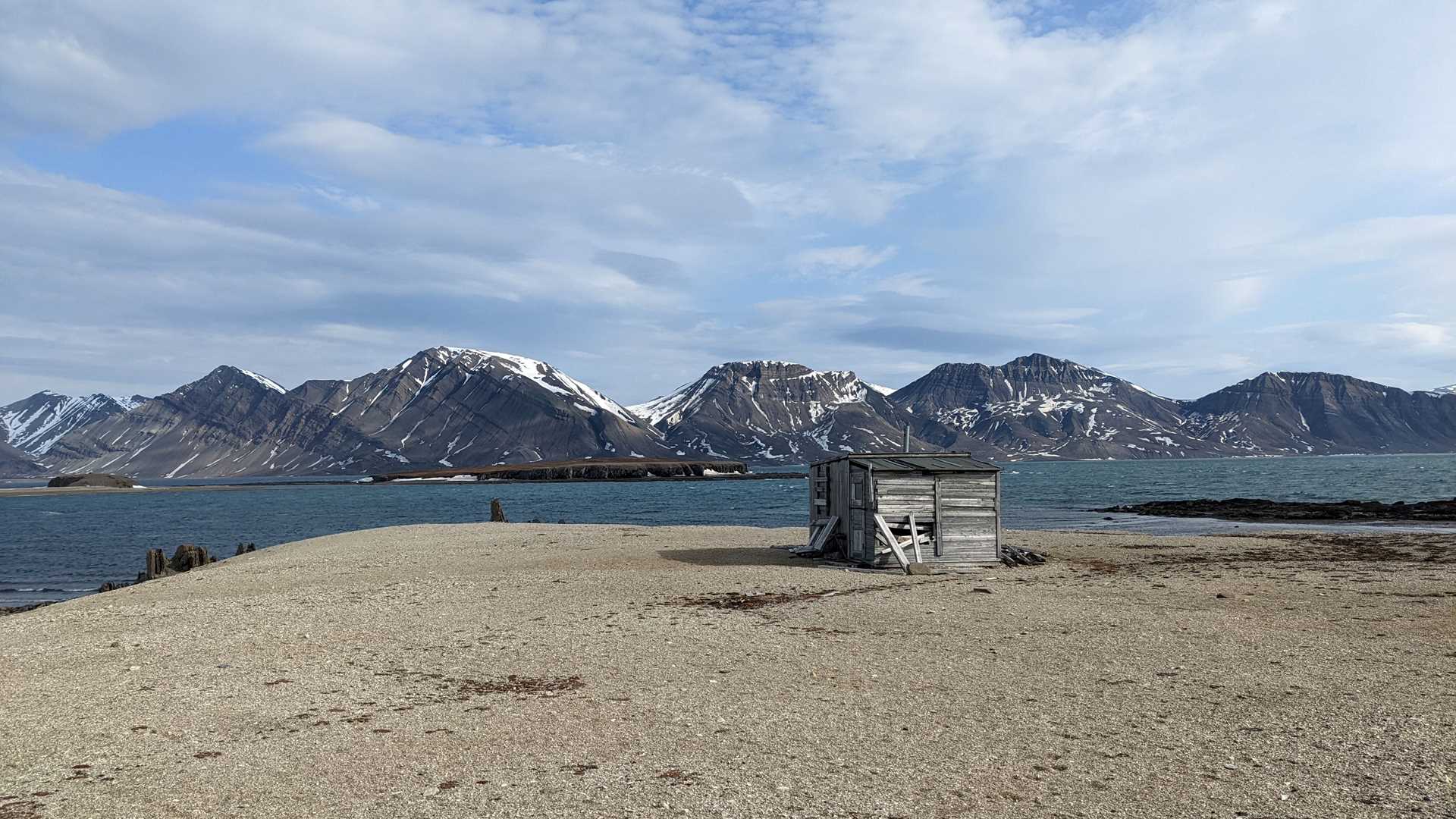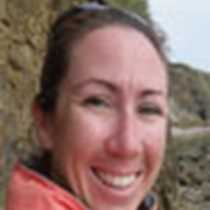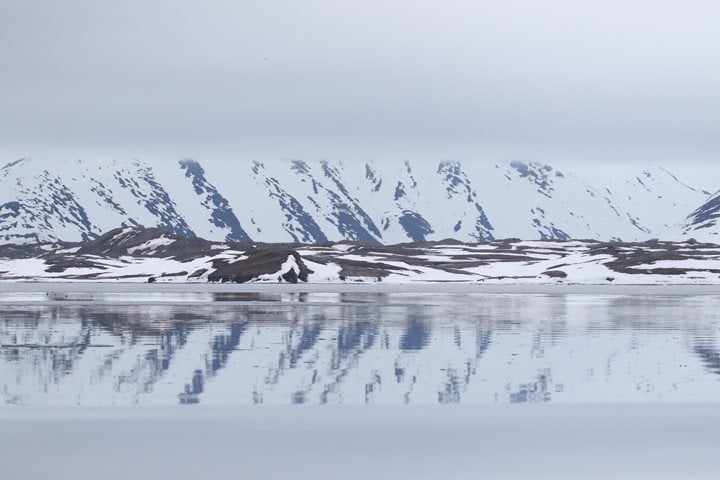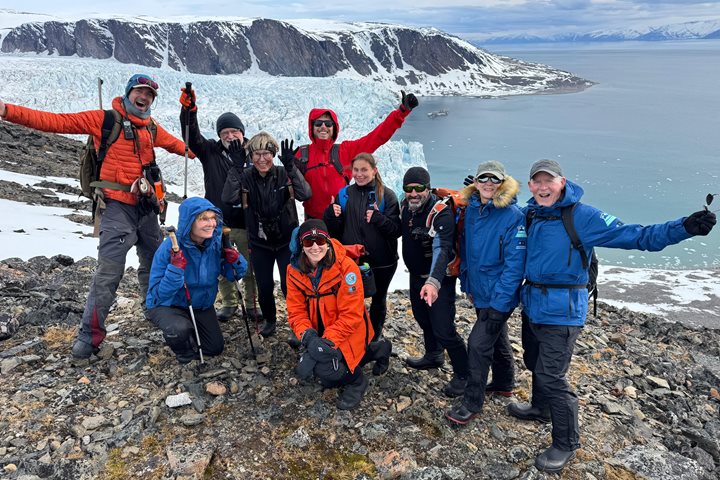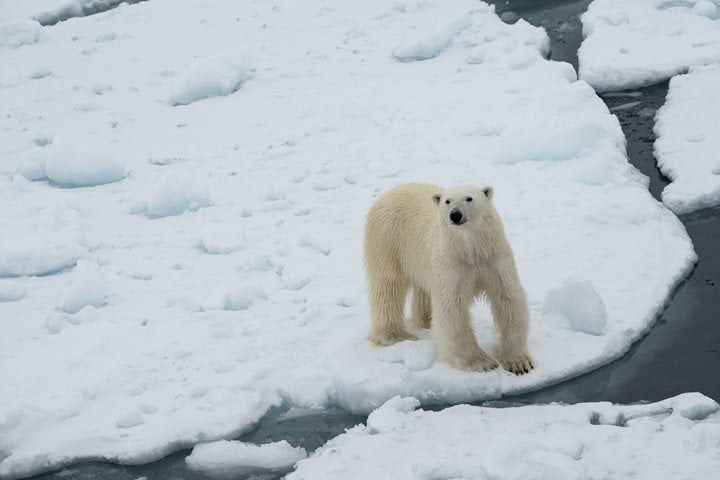It’s hard to believe that our amazing journey together is coming to an end. Today’s expedition in Bamsebu in Bellsund treaded an oddly comfortable line between the utterly foreign wilds of the High Arctic, and the now familiar embrace of a landscape we have fallen in love with. The wind was brisk, but explorers of all interests set out to absorb the scenery with new flames of intrigue, ignited by our two weeks of exploration.
Discarded reindeer antlers, whalebones left behind from human activities of the past, old ships, ancient fossils, lichens, mosses, fresh buds of spring plants: we were surrounded by a plethora of curios set amongst stunning scenery and snow topped mountains.
As we took time to talk about what we had seen in the morning during our afternoon “recap,” we were interrupted by a radio call from our captain. The folks on the bridge had spotted something white and fluffy on the ice ahead! Our time in Svalbard concluded, stunningly, with one last solitary polar bear ambling along the last remaining fast ice of the season. How lucky we have been on this incredible expedition!

